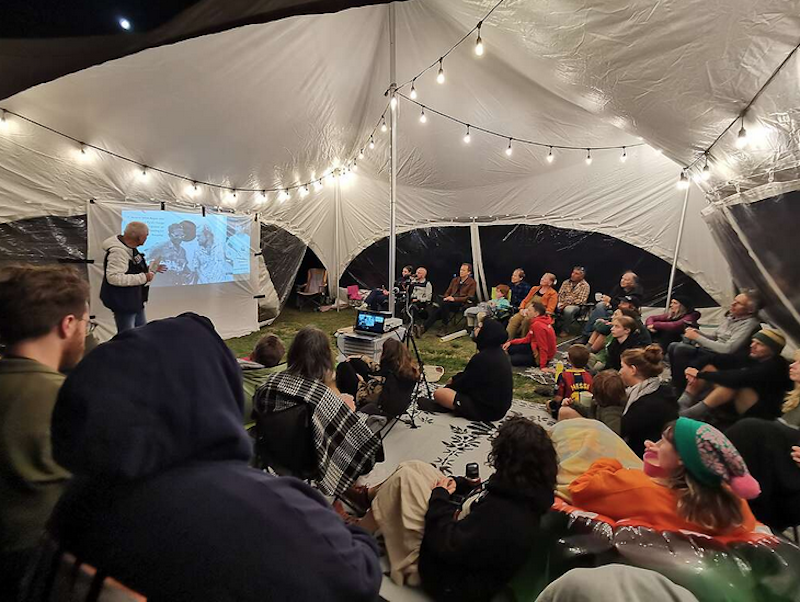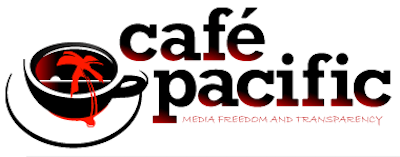In April 2025, several of the Greenpeace crew visited Matauri Bay, Northland, the final resting place of the original flagship, the Rainbow Warrior. This article was one of the reflections pieces written by an oceans communications crew member.
COMMENTARY: By Emma Page
I was on the track maintenance team, on the middle level. We were mostly cleaning up the waterways. I was with my son Wilbur who’s 11, and he was there with his friend Frankie, who’s 12, and they were also knee deep in digging out all of the weeds.
It was my first time at Matauri Bay. One of the things it made me really think about, which is not only specific to the oceans campaign I work on, was really feeling for the first time what being part of Greenpeace as a community or a movement or family means and feels like.
Other reflections:
- Juan: Diving the Rainbow Warrior
- Emma: The story of the journalist on the last voyage, David Robie
- Fleur: The incredible vision of sculptor Chris Booth
- Moira: Connecting with the people and the land

Looking back 40 years
David Robie gave us a really great presentation of what it was like on board the Rainbow Warrior as a freelance journalist on that final voyage in 1985. David is a journalist and was actually one of my journalism lecturers when I went to journalism school at AUT, like 15 plus years ago!
At that time on the Rainbow Warrior he was reporting on the journey to Rongelap and helping the people move from their island home.
When you’re hearing people like David talking about being on that last voyage and sharing those memories — then thinking about how all of us here now are continuing the work — and that in the future, there will be people who join and keep campaigning for oceans and for all the other issues that we work on — I had this really tangible feeling of how it all fits together.
The work goes behind us and before us – I think I described it in my reflection on the day, ‘looking back and moving forward’. And that it’s bigger than me right now or bigger than all of us right now.
Russel [Norman, executive director] said it in a way too, about feeling the challenge from the past when you’re looking at those photos of the people who were on that last voyage, and the really brave work that they did. You see them looking out at you and it does feel motivational, but also like a challenge to keep being courageous.
Dr David Robie’s talk about the Rainbow Warrior and Rongelap. Video: Greenpeace
We can get caught up in the everyday of trying to do something. And this was one of those moments where you get more of a bird’s eye view, and that felt significant.
Connecting with the people in the photos
I think one of the most moving things was hearing David talk about the people in the photographs, making them come alive with the stories of the people and what they were like, including when he talked about his favourite photo that he thought best represented Fernando sitting on a boat with his camera in mid-conversation.

David has written in his book about being on the Rainbow Warrior (Eyes of Fire), putting it in the political context of the time.
He talked to us about the difficulties and all the challenges back 40 years ago, getting content to the media from a boat, and sending radio reports — how important it was to get the story out there.
The Greenpeace photographer — that was Fernando — would have to develop the photos himself on board, then transmit them to media outlets. He was one of the people who was key in getting the story of that final voyage to the media and to the wider public.
I found it interesting also talking with David about the different struggles for journalism training these days — there’s less outlets now to train as a journalist in New Zealand.
That’s because there’s less jobs and there’s so much pressure on the media at the moment. Lots of outlets closing down, people losing their jobs and then the impact of that in terms of being able to get stories out.
Emma Page is oceans communications lead for Greenpeace Aotearoa. Republished with permission.

